The morning started out with some unexpected snowfall, so getting a fire going in the shop was the first order of business. Shortly after, a bottom was added to the box. Thomas was told by his master to put it on with the grain running front to back, which would make it stronger. However, this would also increase the risk of the bottom changing size with the seasons. I was willing to do it Thomas's way, unwise as it may be, but since I had a board which would fit one way and not the other, I went ahead and put it on with the grain running side-to-side. This should be more stable over time. Future boxes might serve as experiments, though the results may not be in for 50 years or so.
One of the great advantages of hand tool woodworking is that numbers rarely need to be involved in the measurements. I just traced the box onto the bottom board, and cut around it. This leaves an oversized bottom:
This is a simple matter to trim with planes:
Thomas then moves onto the molding, but I decided to do the partition first, so that the box would remain flat while working on it. I cannot think of any reason the molding should be done before the partition work. In fact, I would have done the lock installation, too, but don't have the lock yet.
Using a small block of wood as a template, the dovetail saw was used to make a shallow (1/8th ") cut, 3 inches long. Its ok that the cuts go beyond the partition, as they will rarely be seen. Still, I could have made them much shorter, and will in the future for a neater box.
I made this cut on both walls, and then cut the template block itself to size it for the 2d cut:
As the thickness of the partition boards is 1/2", it was simple to find a chisel of that exact size, making clearing out the dado a simple matter. It is always a great policy to size your components from a tool that you have, and this is a main reason I use Western tools and not Japanese; it is a lot easier to make a 1/2" dado with a 1/2" chisel than it is to do metric conversions from millimeters:
After the chisel work, I ensured the bottom of the dado was flat and smooth with a small router plane:
I have not really shown this tool much before, but it is very handy. Called a "hag's tooth" in the olden days, it is simply a sharpened iron bent at 90 degrees from the vertical, for controlling the depth of a groove or other recessed area. It should not be used to actually clear the groove, but is perfect for cleanup. This shows how the blade is shaped; a wonderful example of an utterly simple tool that is also just about perfect at what it does:
Next up was cutting the partition wall. I left it slightly oversized, so that I could gradually trim it until that magic moment when it fits snugly. Again, no measuring with numbers, just drawing a line in the right place:
And then onto the shooting board. A few swipes, test fit, repeat until perfect fit is achieved. This way of working is a lot nicer than trying to cut something at 9 13/65th inches.
The partition is supported underneath by some cleats. There was no real reason to make these perfectly square, but while I had the shooting board out, I did:
There were then installed on the sides. You can see how the dado cuts extend longer than they need to:
The partition is nailed and glued to the bottom, and slipped into place. It is then trimmed to fit at the top, again with no measuring:
The molding was then attached, and the box itself is about done. It still needs a lock, hinges, and a lid:
It is bigger than it might seem:
I wanted to get going on the lid, but needed to prepare another 9' board in the rough and that sounded like too much work at the moment. Instead, I put a bottom on this practice box, and finally got around to something I have been wanting to do for a while: making a measuring and marking organizer for my gauges, knife, pencils, dividers, etc. I used the same concept as the Schoolbox partition, but flipped 90 degrees for a wider base. I drilled some simple holes (not exactly sure how I want to use it yet), and planed the "holder" down a bit so that it left a gap just wide enough for squares on the back edge. The holder lifts out easily, so everything can be packed underneath it. I will probably add a lid at some point, but for now it is way better than the overflowing little tray I was using.
The hardest part of this was definitely the mitres on the molding. With total concentration, I was able to get them to fit rather nicely during the dry fit, but for whatever reason, they opened up a tiny bit while nailing them down. This is one area where I need a lot of practice, but it is good to have the box nearing completion. Next steps are to create the lid (and its similar molding), install hinges, and a lock. Then its on to box number two, unless I finally start on the workbench, like I want to...
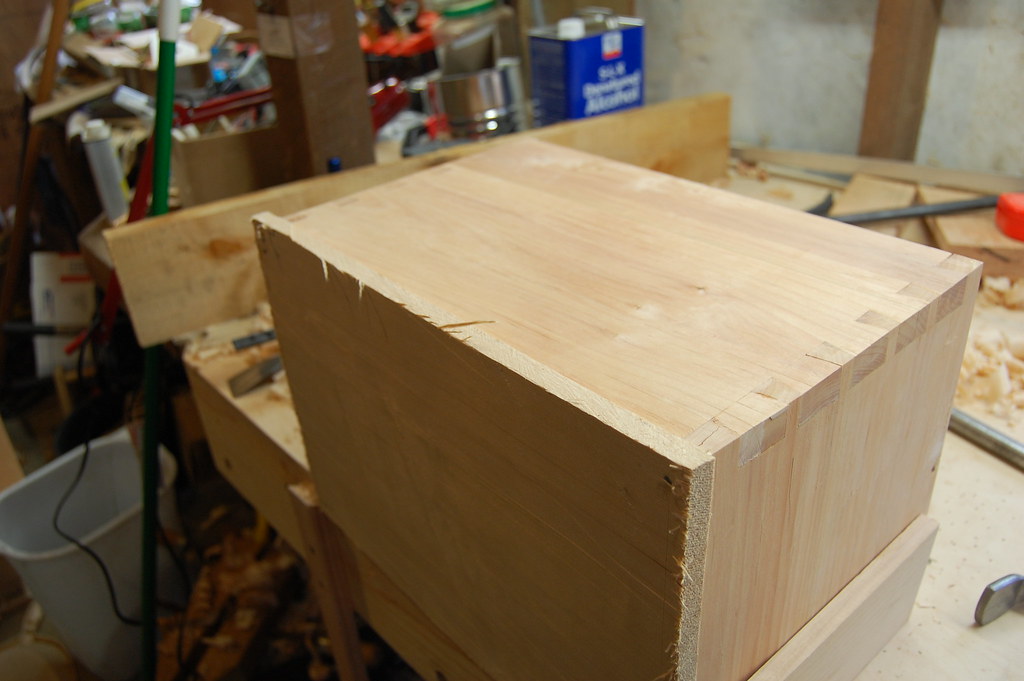

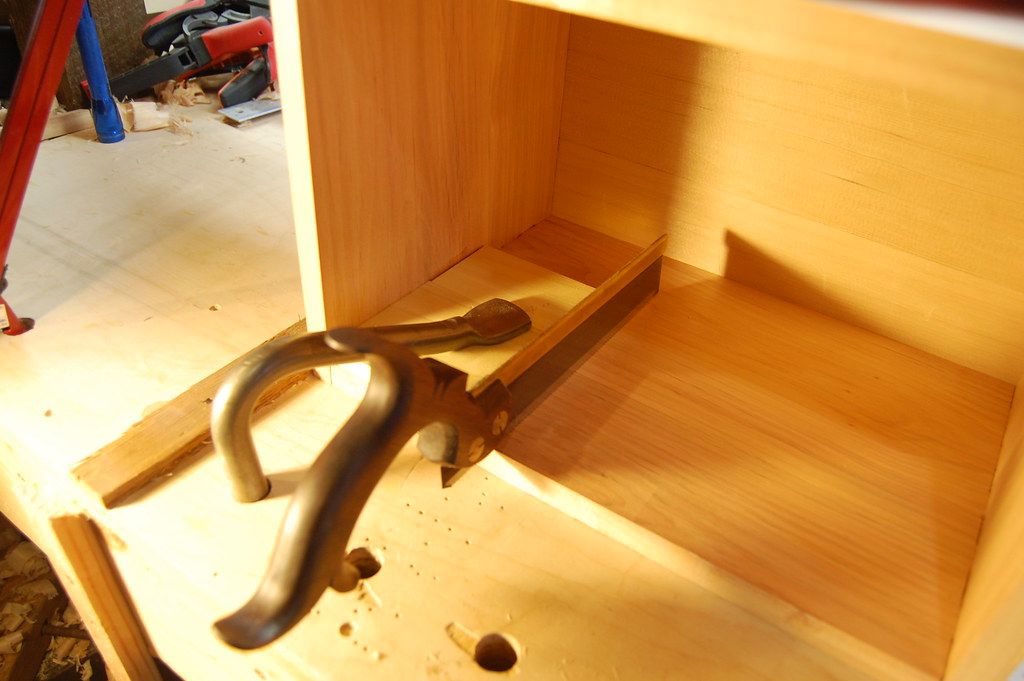
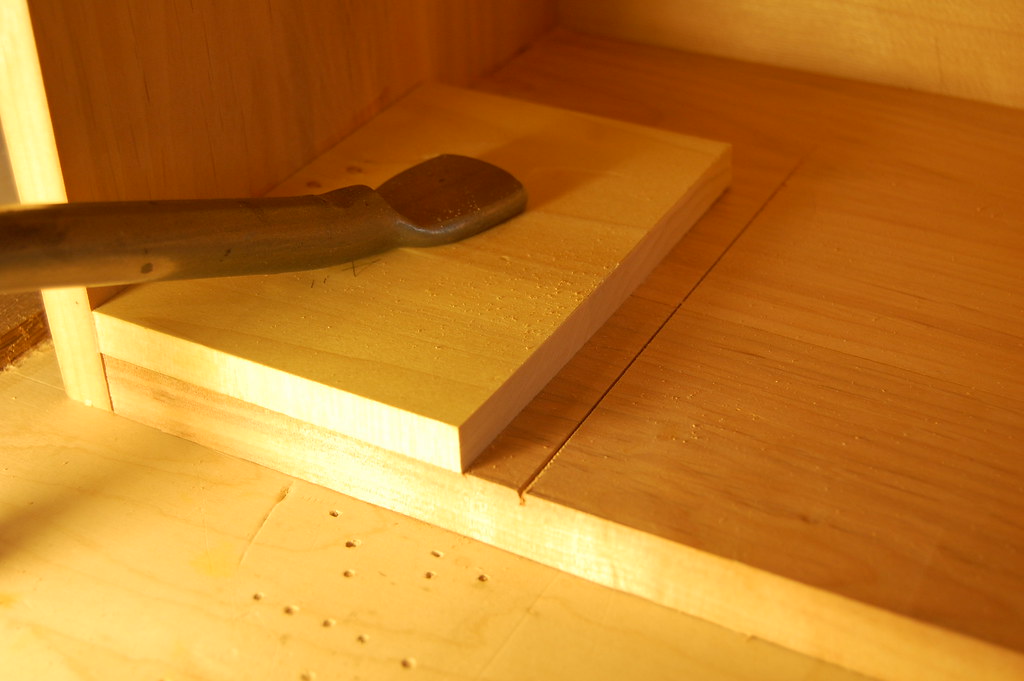

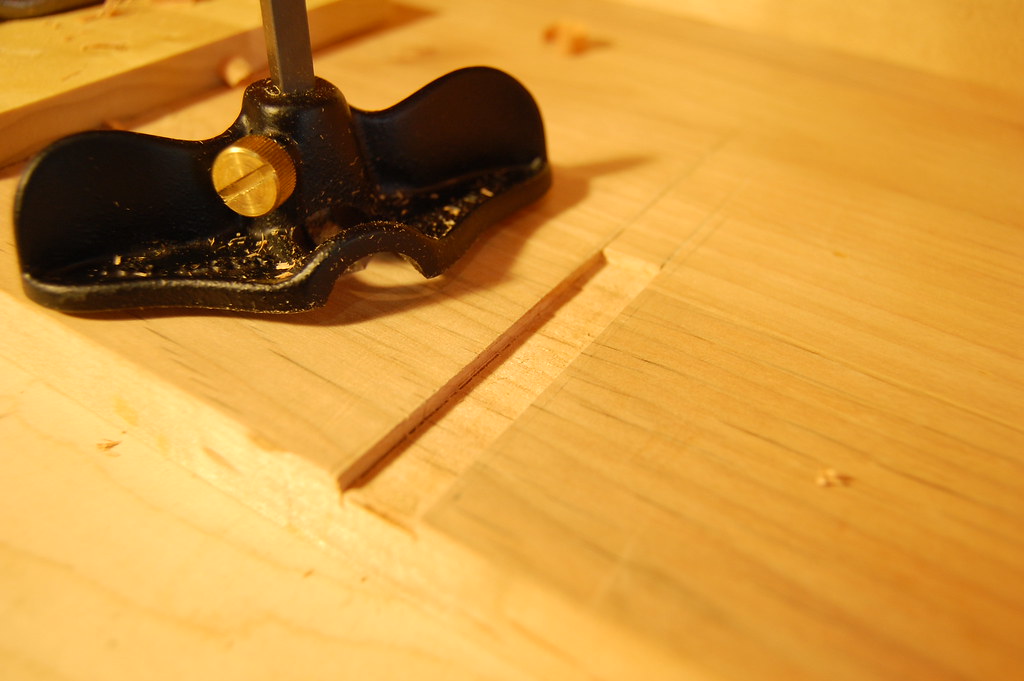
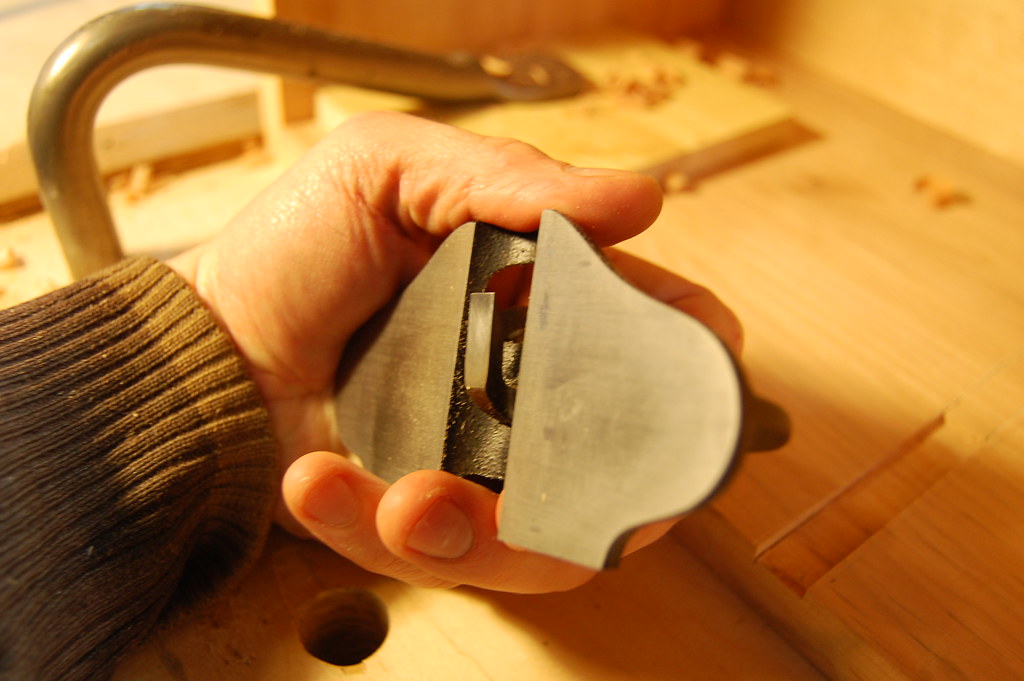



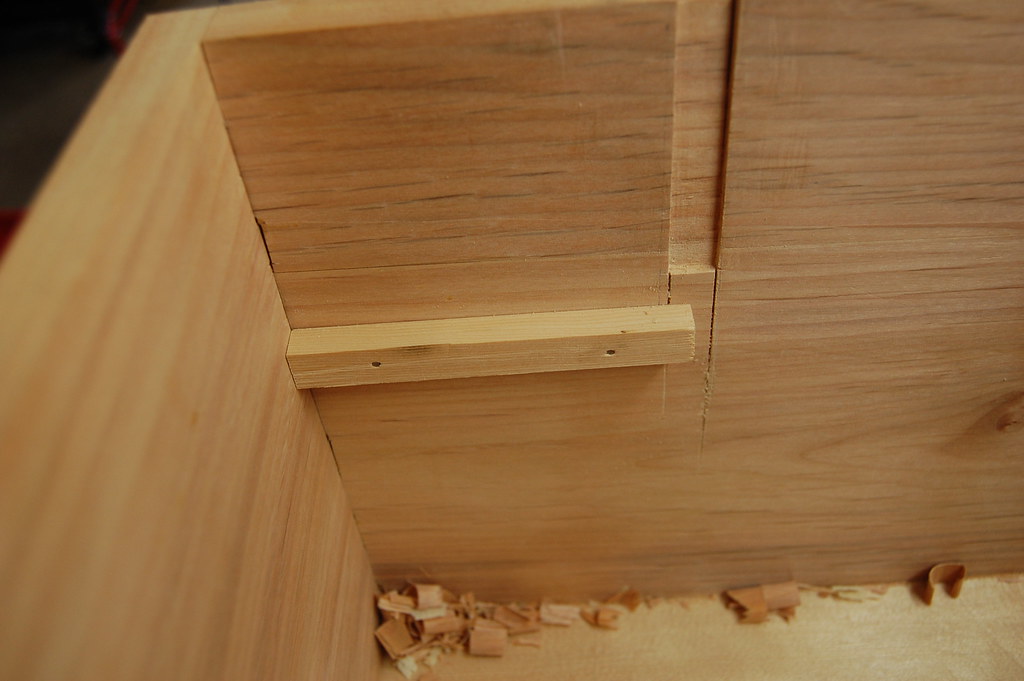
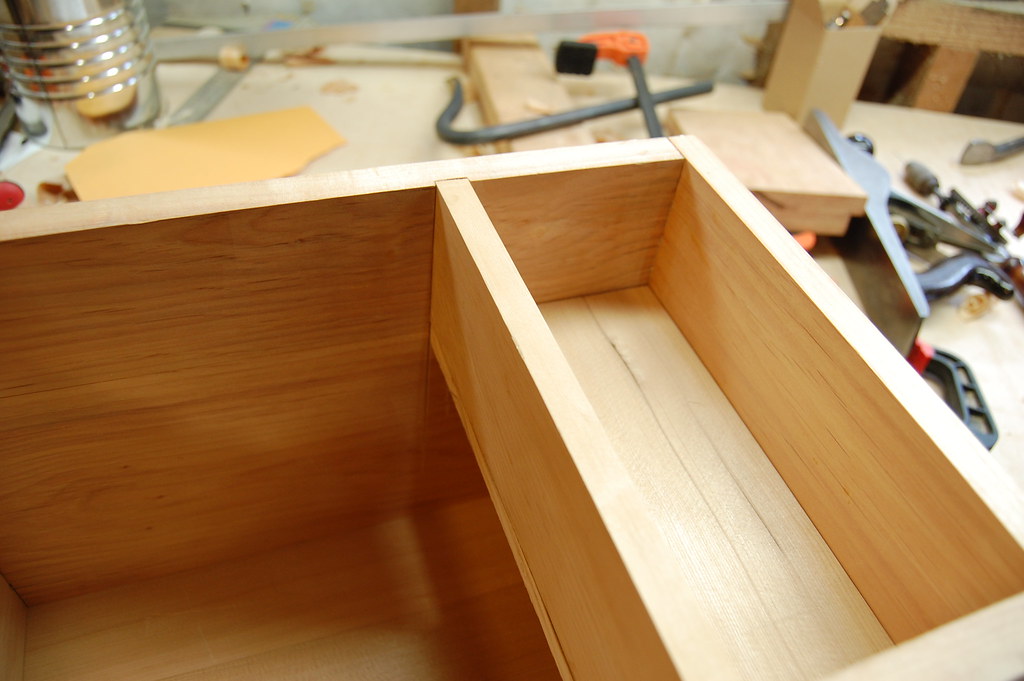



No comments:
Post a Comment